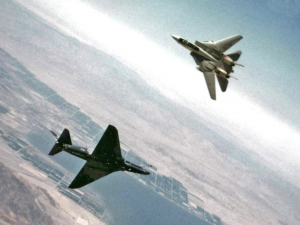The Value of KPIs — 4 Lessons From the Trenches
From the book Peak: Secrets from the Science of Expertise, 4 Lessons on the Importance of KPIs With Application to Your Business
I recently finished reading an excellent book titled Peak: Secrets from the Science of Expertise, written by Anders Ericsson and Robert Pool. The book is filled with inspiring examples of the power of diligent practice. I can’t recommend the book enough, especially to organizational leaders that are striving to achieve more with their troops’, as well as their own, capabilities.
There was one specific example in the book that I thought really brought together a number of important insights that combined how the value of KPIs (Key Performance Indicators) can be used to identify issues needing to be addressed with the application of Ericsson’s and Pool’s concepts on deliberate practice to produce an extraordinary result. There a many facets to deliberate practice, but it is a fundamentally different way of acquiring a skill beyond dedicating 10,000 hours, as is described in Malcom Gladwell’s Outliers. But first the story…
The situation, as described in Peak:
It was 1968 and the Vietnam war was in full swing with Navy and Air Force pilots regularly engaging Soviet-trained North Vietnamese pilots flying Soviet-made MIG fighter planes in dog fights and the Americans weren’t doing so well.
In the previous three years, pilots of both the Navy and Air Force had been wining about two thirds of their dog fights. They downed roughly 2 North Vietnamese jets for every one jet they lost. But in the first 5 months of 1968, the ratio had dropped to about 1 to 1. The Navy had shot down 9 enemy jets and lost 10 of their own jets. Furthermore, over the summer of 1968, Navy pilots had fired more than 50 air-to-air missiles without shooting down a single MIG.
The Value of KPIs — Lesson #1
The Navy was using a descriptive analytic or KPI to measure their effectiveness. The Navy knew they had a problem and went about developing a strategy to deal with their declining metrics. Does your business have a set of KPIs to monitor business performance? Examples of similar descriptive analytics include: 1) # unique products sold; 2) share of new products sold; 3) win rate; 4) # accounts per sales rep; and 5) # of bundled deals. Important lesson number one is that your business needs a set of KPIs so that key management personnel can closely monitor business performance and take corrective action. The Navy had KPIs to monitor their effectiveness in the skies over North and South Vietnam, which were painfully obvious because it resulted in crews not returning to base. Continuing with the story…
The Navy’s brass decided something had to be done. That something turned out to be the establishment of the Top Gun School. The purpose of the school was to teach Navy pilots to fight more effectively and improve their performance in dog fights…
The Navy picked its best pilots to be the trainers. These men would play the role of enemy North Vietnamese pilots and engage the students in air-to-air combat. The trainers known collectively as the Red Force flew fighter planes that were similar to the MIGs and used similar tactics to those the North Vietnamese pilots had learned. Their aircraft were fitted with cameras rather than bullets and missiles, to record each encounter.
The Value of KPIs — Lesson #2
Important lesson number two is selecting the right trainers or coaches. How do you find the best coaches? If your business uses KPIs or some other tool to collect assess employee efficiency, either of those would be a good place to identify potential coaches. Finding coaches that can “walk the talk” is critically important to your training program. With the coaches in place, the trainees show up for class…
The students who attended the Top Gun Academy were the next best fighter pilots in the Navy after the trainers. Collectively they were known as the Blue Force. They flew U.S. made fighter jets, again without any bullets or missiles. Each day they would climb aboard their fighter jets to engage the Red Force. It was expected that they would push their jets and themselves right up to the edge of failure in order to learn what the planes were capable of and what was required to get that performance out of them.
The pilots of the Red Force, being the best pilots the Navy had, generally won the dog fights. And the trainers’ superiority only increased over time. Because every few weeks a whole new class of students would enter the Top Gun Academy while the trainers stayed there month after month accumulating more and more dog fighting experience as time went on, getting to the point where they had seen everything a student might throw at them.
For a new class, the first few days of dog fights were usually brutal defeats for the Blue Force. That was okay however, because once the pilots landed, in what the Navy called after action reports, the two sides would meet. During these sessions the trainers grilled the students relentlessly, “what did you notice when you were up there,” “what actions did you take,” “why did you do that,” “what could you have done differently.”
The Value of KPIs — Lesson #3
Lesson number three is the application of extensive focused practice that is measured, combined with feedback. Both are invaluable parts of the process. A good analogy is assuming you want to become a professional golfer. Going out and pounding golf balls for 10,000 hours without a professional teacher is more than likely not going to get you to the professional level.
When it was all over the Blue Force pilots would return to their units, now much more experienced with dog fighting than anyone else in their units, where they would become the squadron training officers and pass on what they had learned to the other pilots in their squadrons.
The Value of KPIs — Lesson #4
Lesson number four, be smart about the “train the trainer” aspect of your employee development programs. The next level of trainers need to be as effective as the pilots on the Red Force, as a goal.
So here’s what happened next…
U.S. forces had stopped their bombing through all of 1969. So there were no dog fights that year. But the air war resumed in 1970, including air-to-air combat between fighters. Over the next three years from 1970 to 1973, the U.S. Navy pilots shot down 12.5 North Vietnamese fighter planes for every one Navy plane lost.
Perhaps the best way to view the improvement is through the Kills per engagement statistics. Throughout the entire war, U.S. fighter jets downed an enemy fighter jet once every five encounters. However in 1972, which was the last full year of air combat, Navy fighter pilots shot down an average of 1.04 jets per encounter. In other words, on average every time Navy pilots engaged an enemy jet fighter, they would down an enemy plane.
Final Takeaway on The Value of KPIs
There are a number of valuable lessons for business owners and executives in this great story. The effectiveness of the Top Gun Schools results with Navy pilot was so dramatic that the Air Force started their own program and experienced similar results. In fact during the first seven months of the Gulf War, pilots shot down 33 enemy planes while losing only one aircraft. This kind of improvement starts with determining your KPIs, measuring them, and developing strategies for continuously improving them through Anders Ericsson’s and Robert Pool’s techniques for deliberate practice as described in Peak: Secrets from the Science of Expertise. I highly recommend this book.


